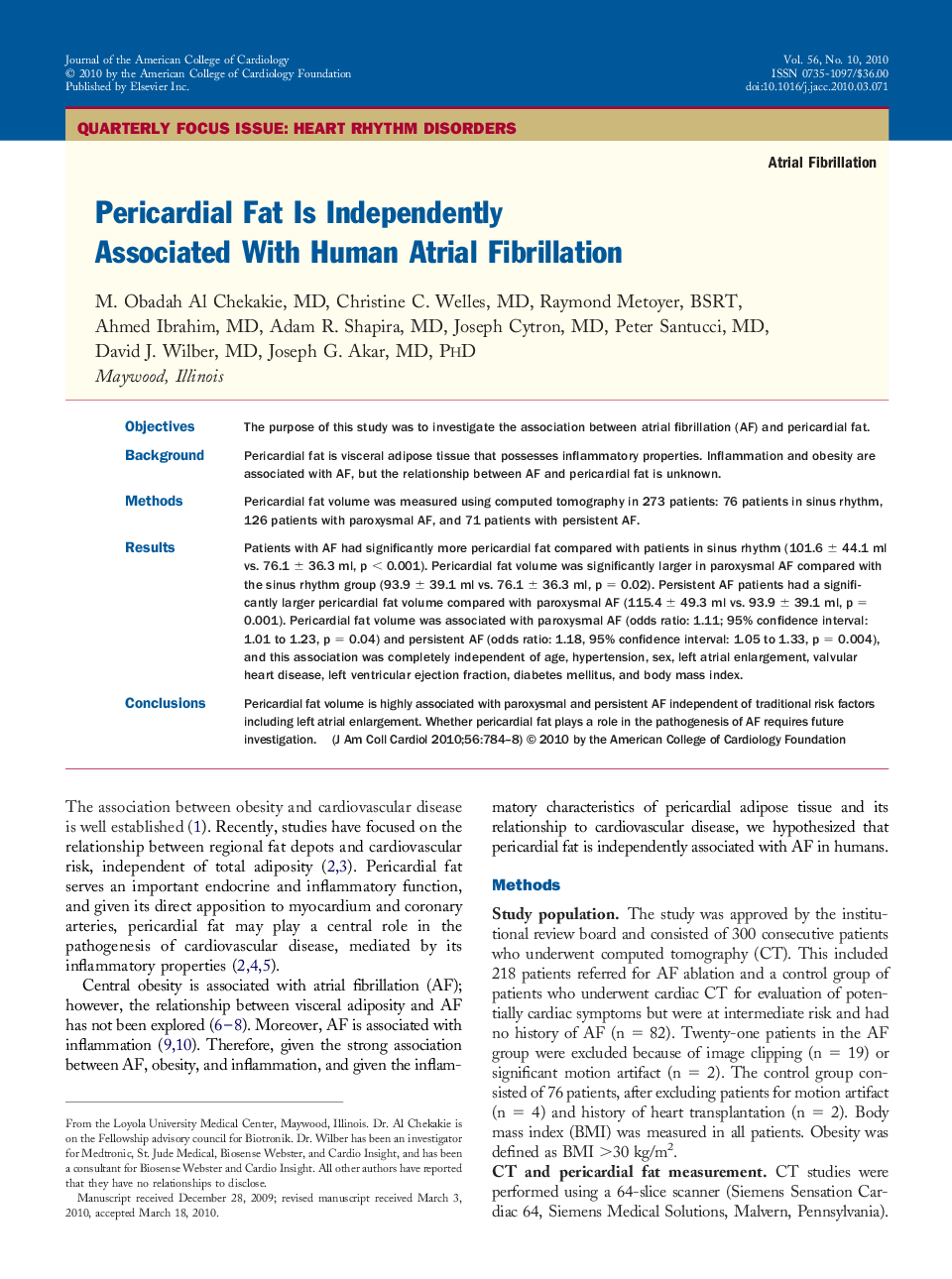| Article ID | Journal | Published Year | Pages | File Type |
|---|---|---|---|---|
| 2948397 | Journal of the American College of Cardiology | 2010 | 5 Pages |
ObjectivesThe purpose of this study was to investigate the association between atrial fibrillation (AF) and pericardial fat.BackgroundPericardial fat is visceral adipose tissue that possesses inflammatory properties. Inflammation and obesity are associated with AF, but the relationship between AF and pericardial fat is unknown.MethodsPericardial fat volume was measured using computed tomography in 273 patients: 76 patients in sinus rhythm, 126 patients with paroxysmal AF, and 71 patients with persistent AF.ResultsPatients with AF had significantly more pericardial fat compared with patients in sinus rhythm (101.6 ± 44.1 ml vs. 76.1 ± 36.3 ml, p < 0.001). Pericardial fat volume was significantly larger in paroxysmal AF compared with the sinus rhythm group (93.9 ± 39.1 ml vs. 76.1 ± 36.3 ml, p = 0.02). Persistent AF patients had a significantly larger pericardial fat volume compared with paroxysmal AF (115.4 ± 49.3 ml vs. 93.9 ± 39.1 ml, p = 0.001). Pericardial fat volume was associated with paroxysmal AF (odds ratio: 1.11; 95% confidence interval: 1.01 to 1.23, p = 0.04) and persistent AF (odds ratio: 1.18, 95% confidence interval: 1.05 to 1.33, p = 0.004), and this association was completely independent of age, hypertension, sex, left atrial enlargement, valvular heart disease, left ventricular ejection fraction, diabetes mellitus, and body mass index.ConclusionsPericardial fat volume is highly associated with paroxysmal and persistent AF independent of traditional risk factors including left atrial enlargement. Whether pericardial fat plays a role in the pathogenesis of AF requires future investigation.
